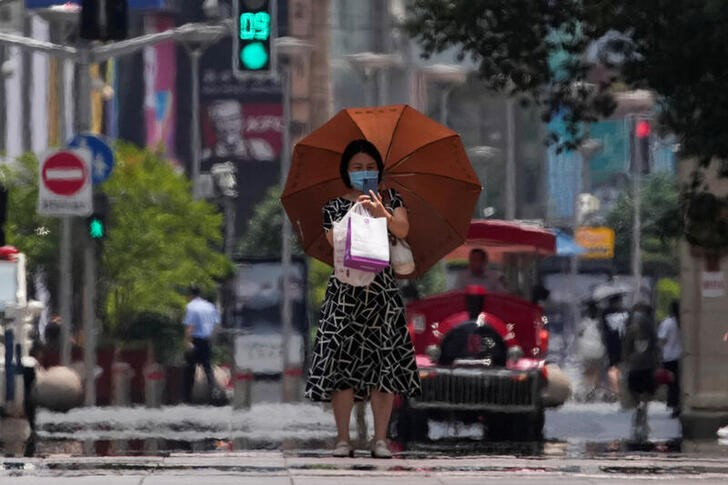BEIJING – Searing heatwaves swept across China’s vast Yangtze River basin on Wednesday, hammering densely populated megacities from Shanghai on the coast to Chengdu deep in the heartlands.
More than 90 red alerts, the most severe in a three-rung warning system, were active across China as of 3:30 p.m. (0730 GMT). Most were in the Yangtze basin, which spans nearly 2,000 km (1,200 miles).
Shanghai, China’s commercial capital, issued its second red alert in four days, warning of temperatures exceeding 40 degrees Celsius (104 degrees Fahrenheit). Construction and other outdoor activities are reduced or halted under a red alert, historically very rare for the city of 25 million.
In Nanjing, a nearby city of over 9 million, the summer “has never been hotter,” said one 77-year-old resident.
The province of Zhejiang south of Shanghai issued a record 51 red alerts in one day, with local media reporting people being admitted to hospitals for heatstroke or even dying from it.
The hot spell of the past 30 days has been described by Chinese weather watchers as widespread, prolonged and extreme and, due to higher demand for air-conditioning, the load on the power grids of seven provinces and regions has hit a record high, according to state media.
The hashtag #heatstroke was trending on social media with 2.45 million views on the Weibo platform, with discussions ranging from people being admitted to hospital to the detrimental effects of long-term heat exposure.
‘LIKE A FOOD STEAMER’
In Chengdu, the capital of southwestern Sichuan province, a scheduled outage and upgrade of the grid this week coincided with hot weather, sparking loud protests from some of its 21 million residents on social media.
“This is a large-scale blackout,” said a netizen on Weibo.
“Residents can’t be guaranteed their power supply. No one is doing anything about it.”
In the city of Yanjin, also in China’s southwest, temperatures reached 44 degrees Celsius on Monday, the highest since record-keeping started in 1959, state television reported.
In the past month, high-temperature events have affected more than 900 million of China’s 1.4 billion people and a total area of 5 million square kilometres, or half of the country, the National Climate Center said on Wednesday.
In Henan province, maintenance workers cleaned and checked air-conditioners on top of trains that pass through its capital Zhengzhou, a transportation hub in central China, under the piercing rays of the sun.
“Up here, it is very hot, it is like a food steamer,” Wang told state television,” said one worker, Wang Mian.
“Our clothes are wet every day. Sometimes they never dry.”
(Reporting by Ryan Woo, Albee Zhang and Bernard Orr; Additional reporting by Beijing newsroom; Editing by Louise Heavens, Edwina Gibbs and John Stonestreet)




